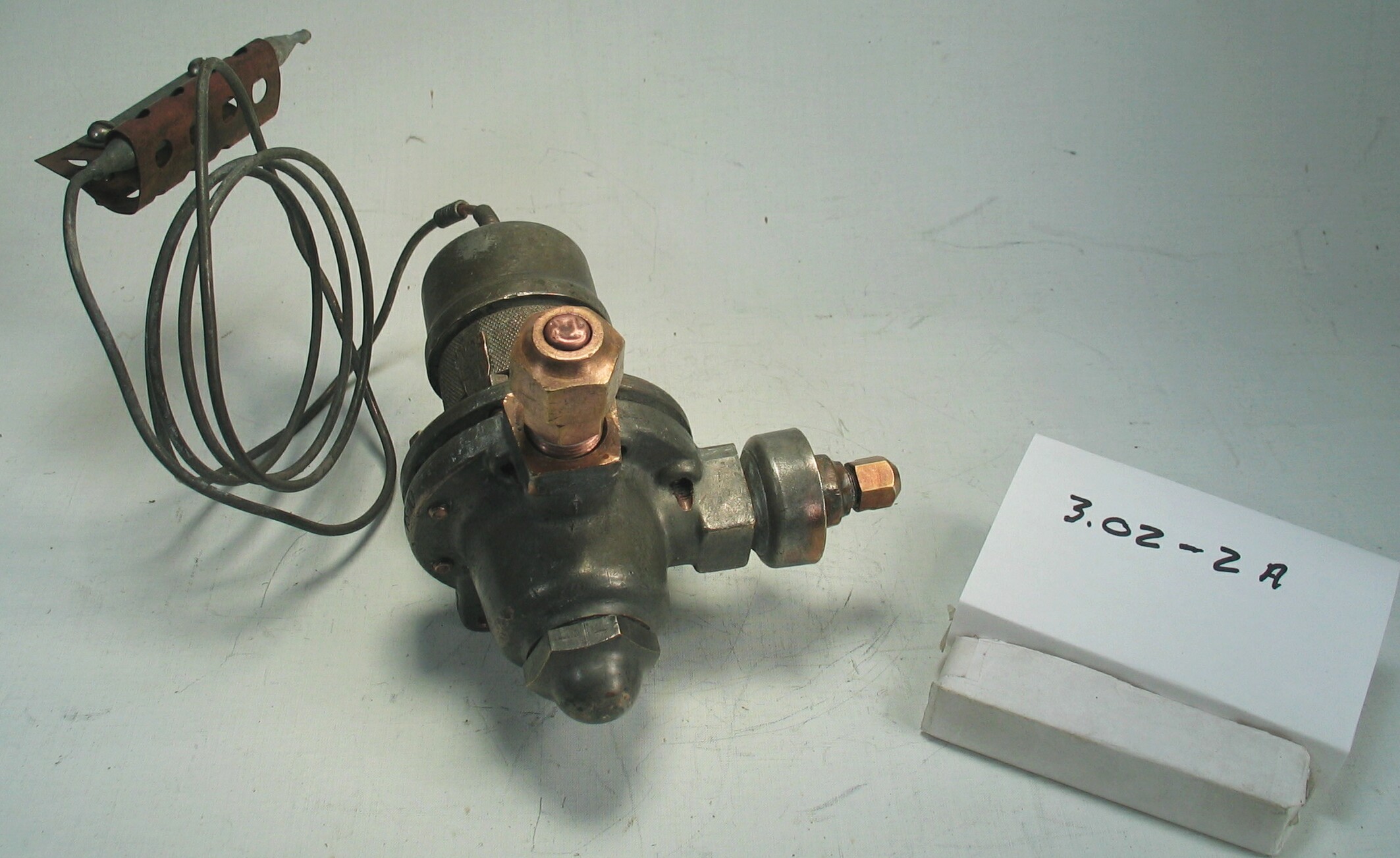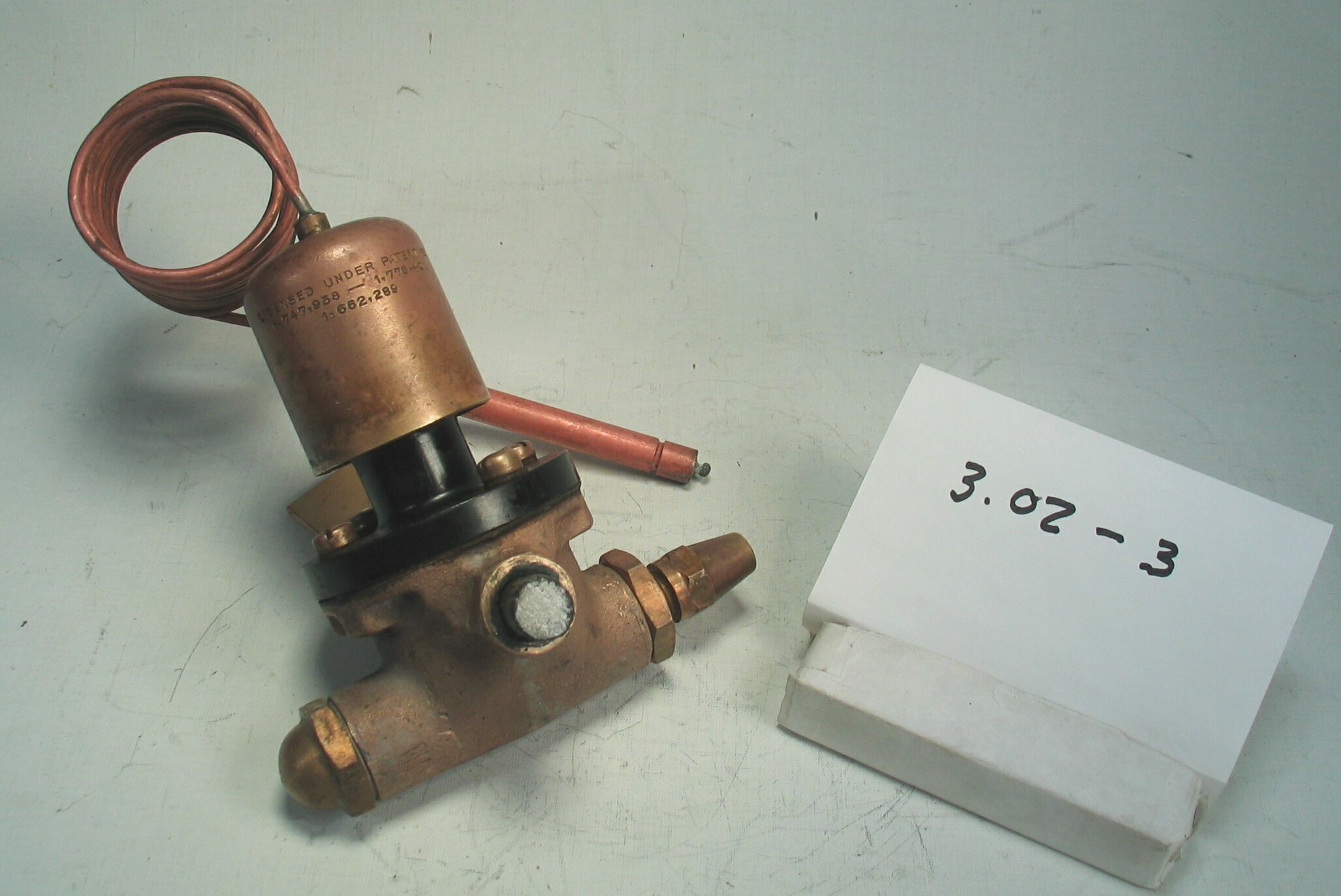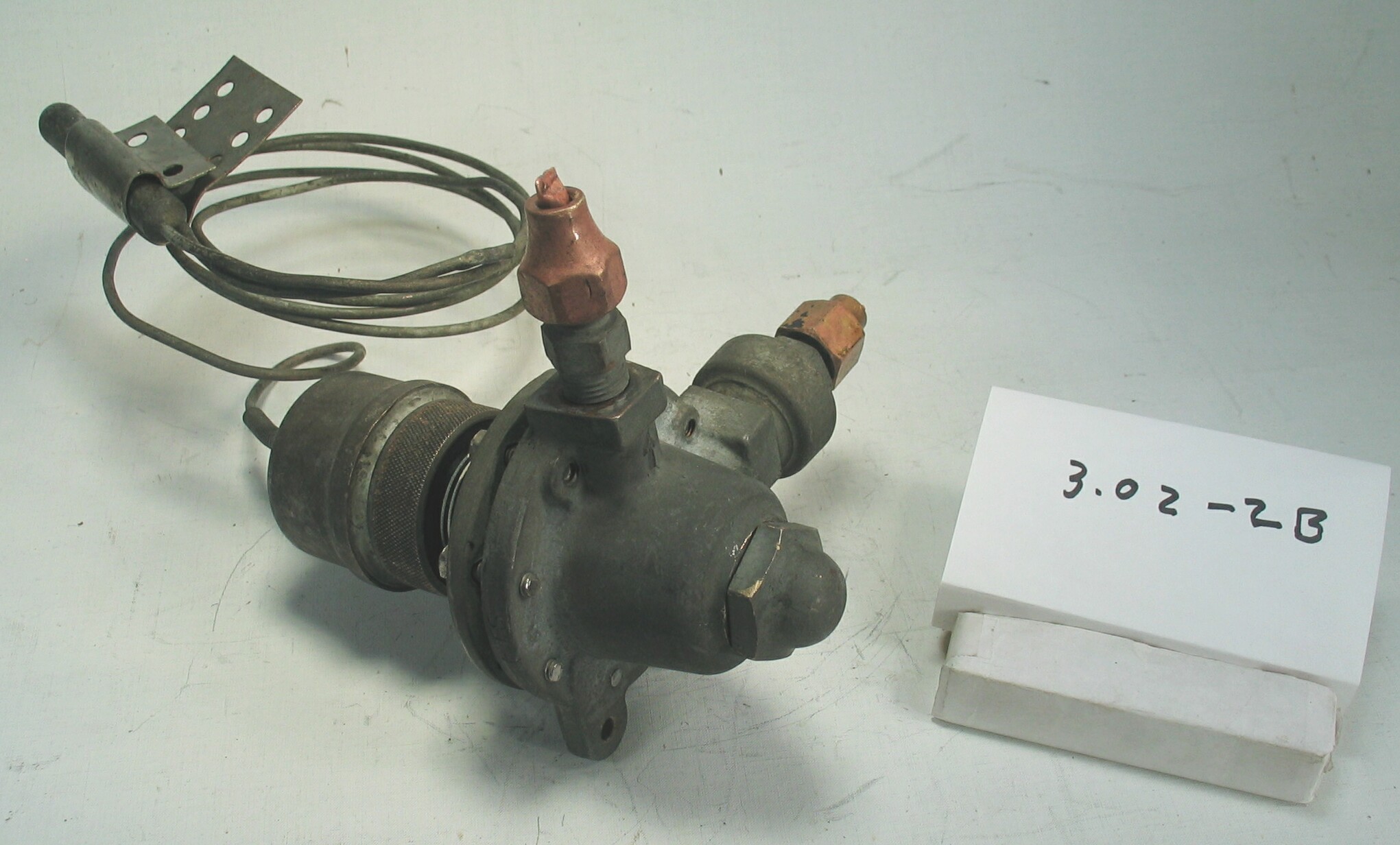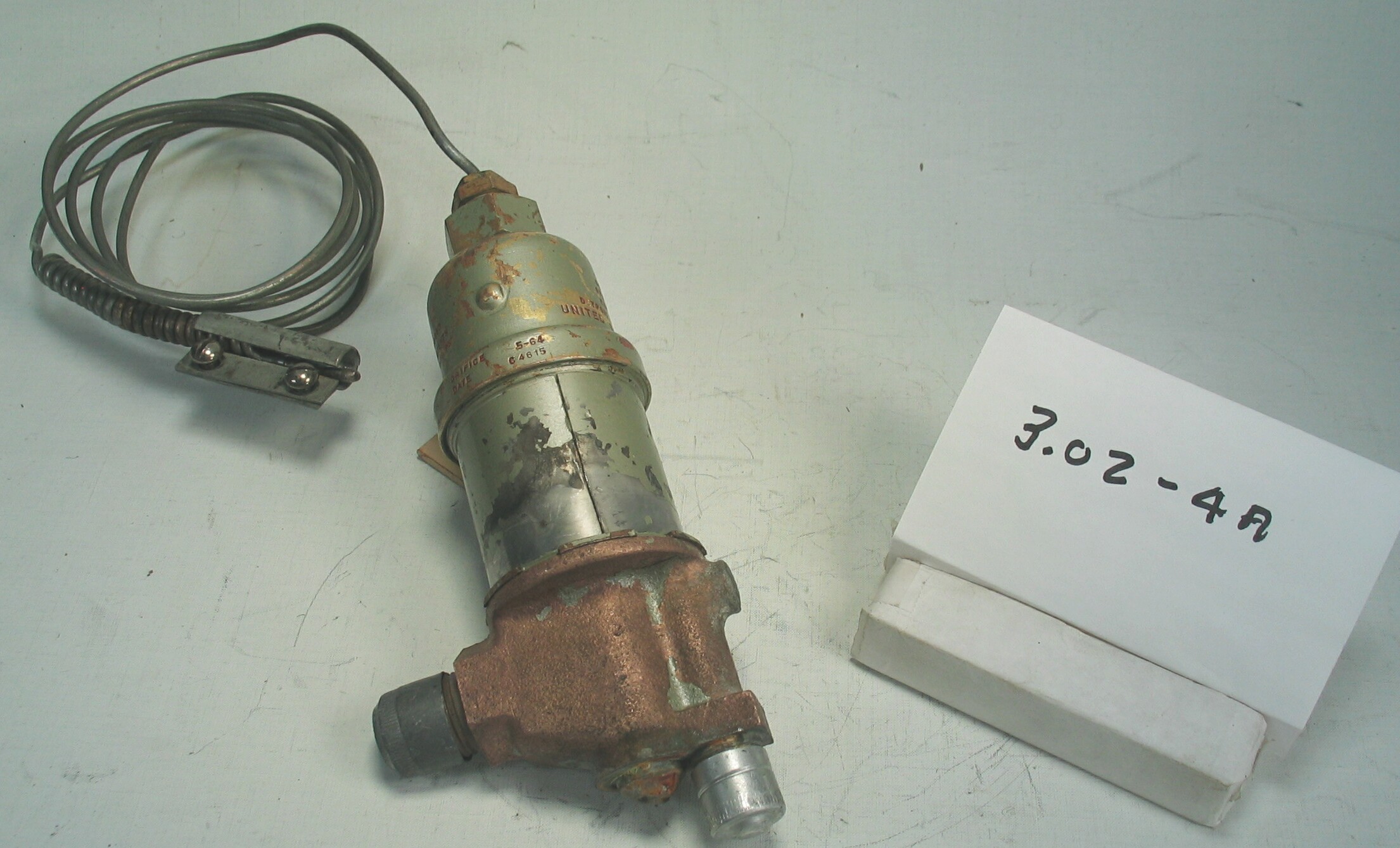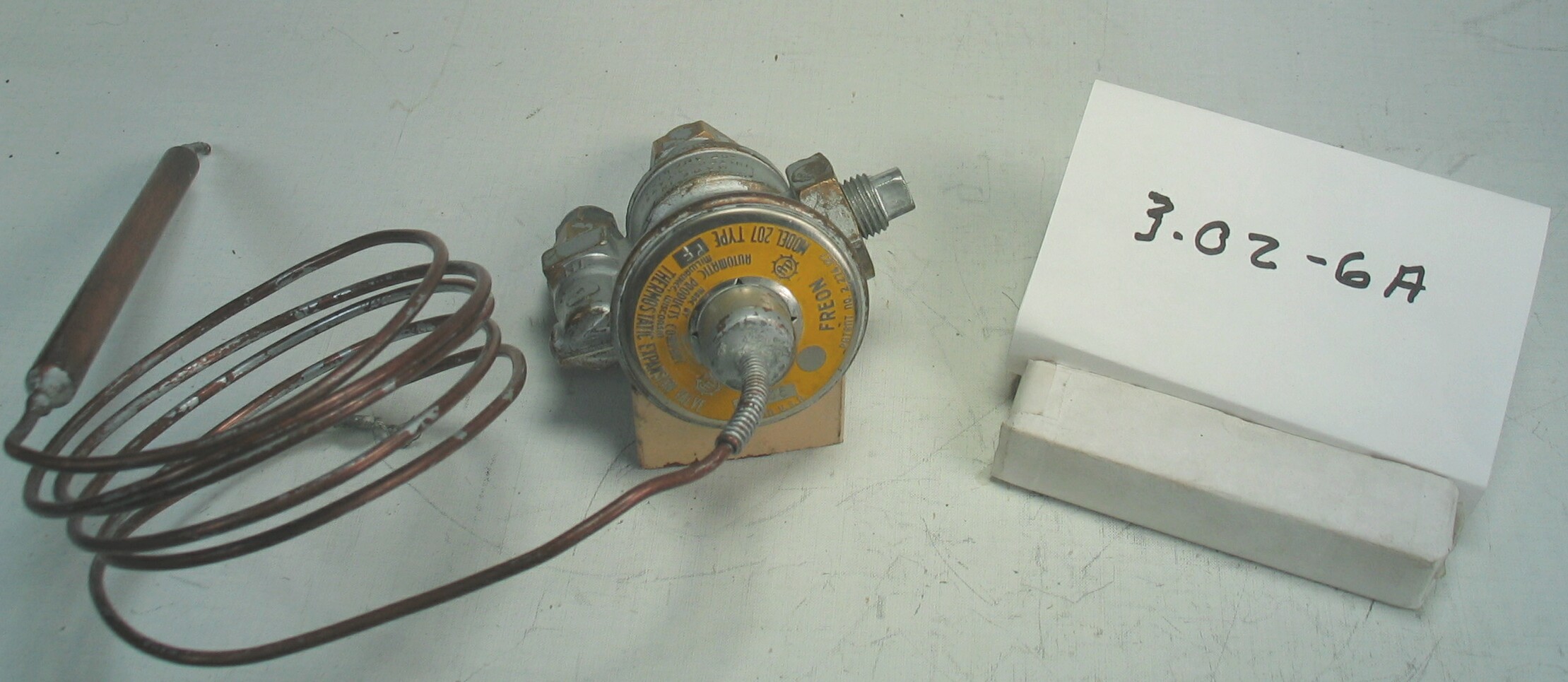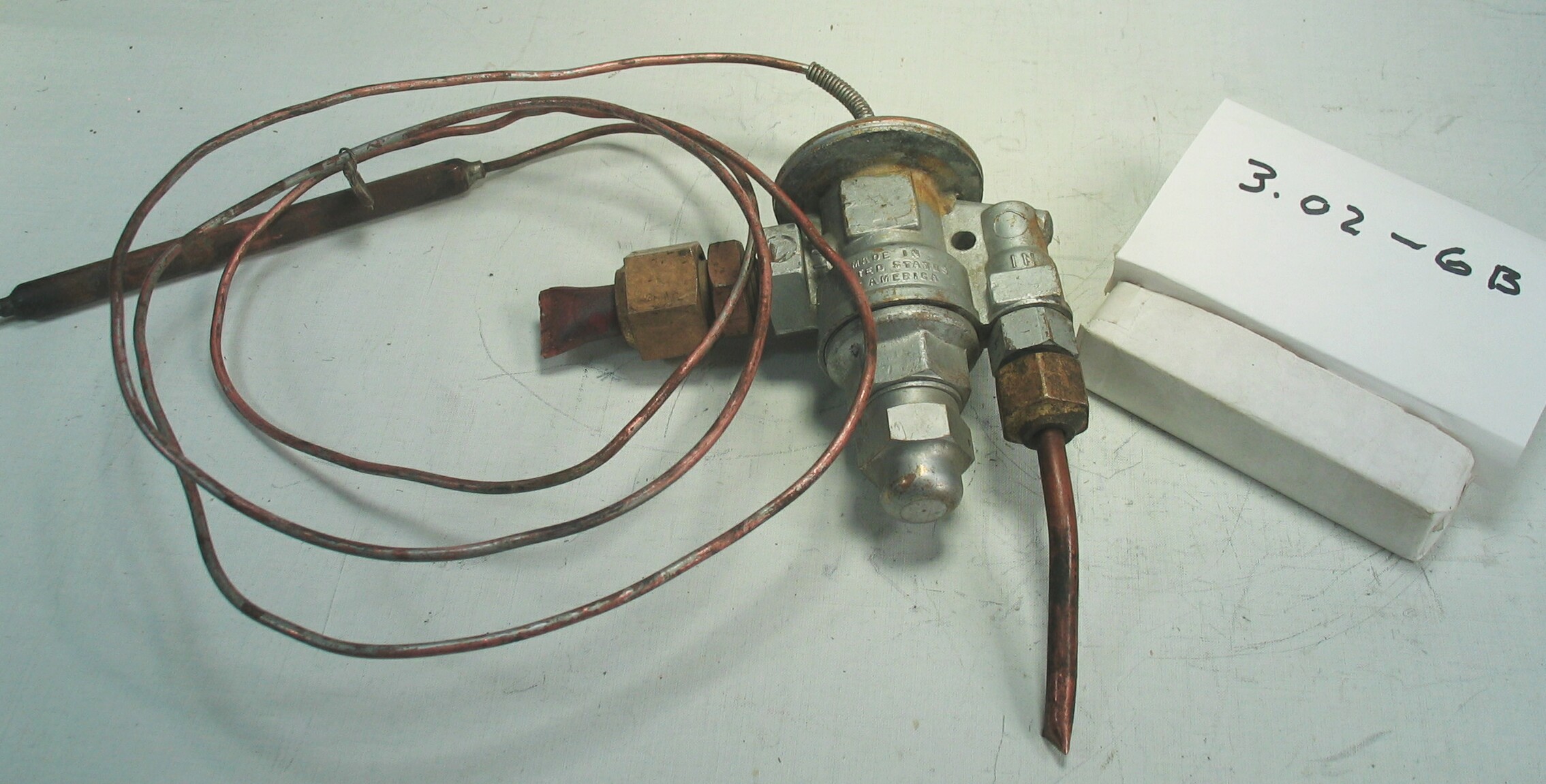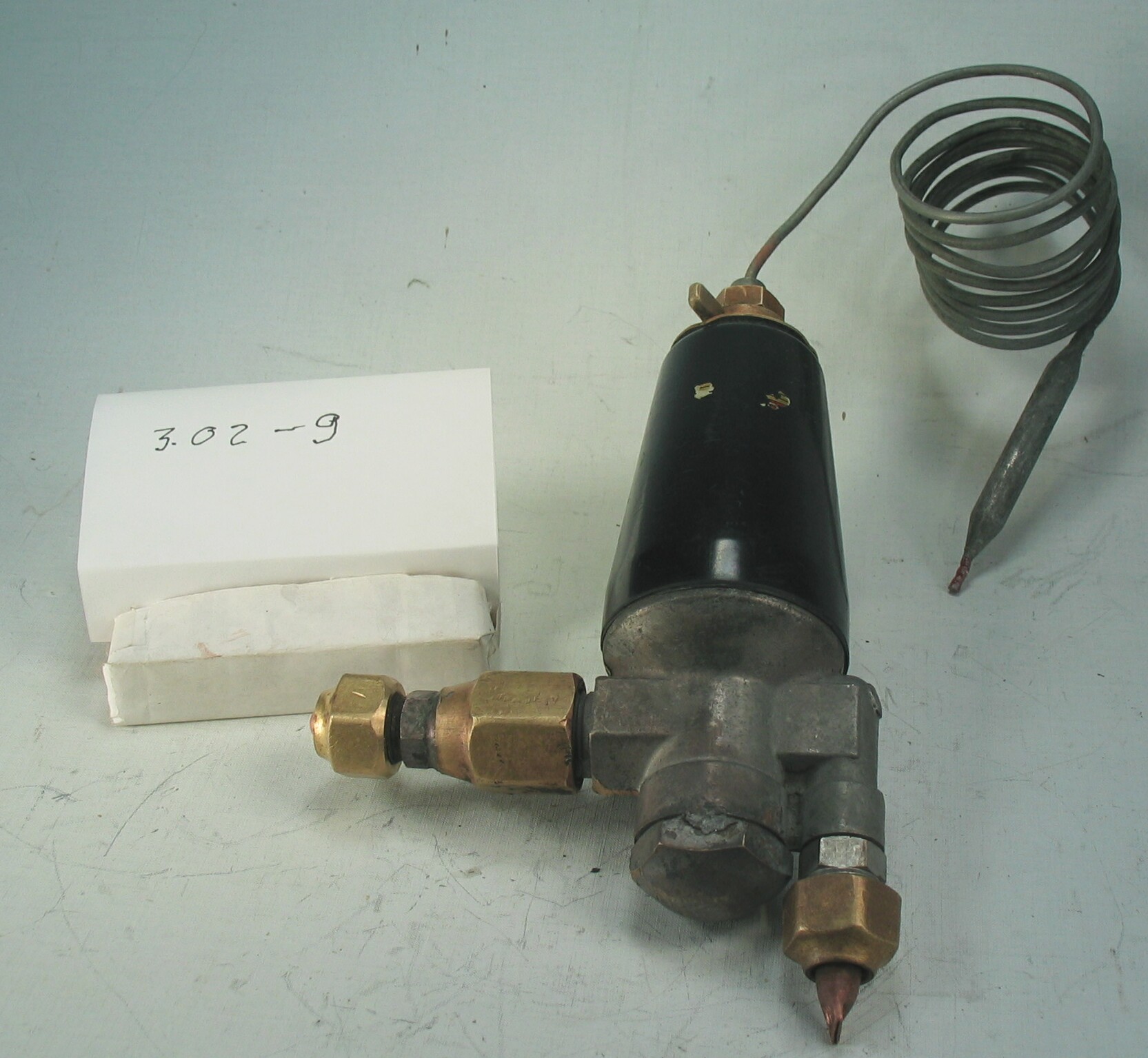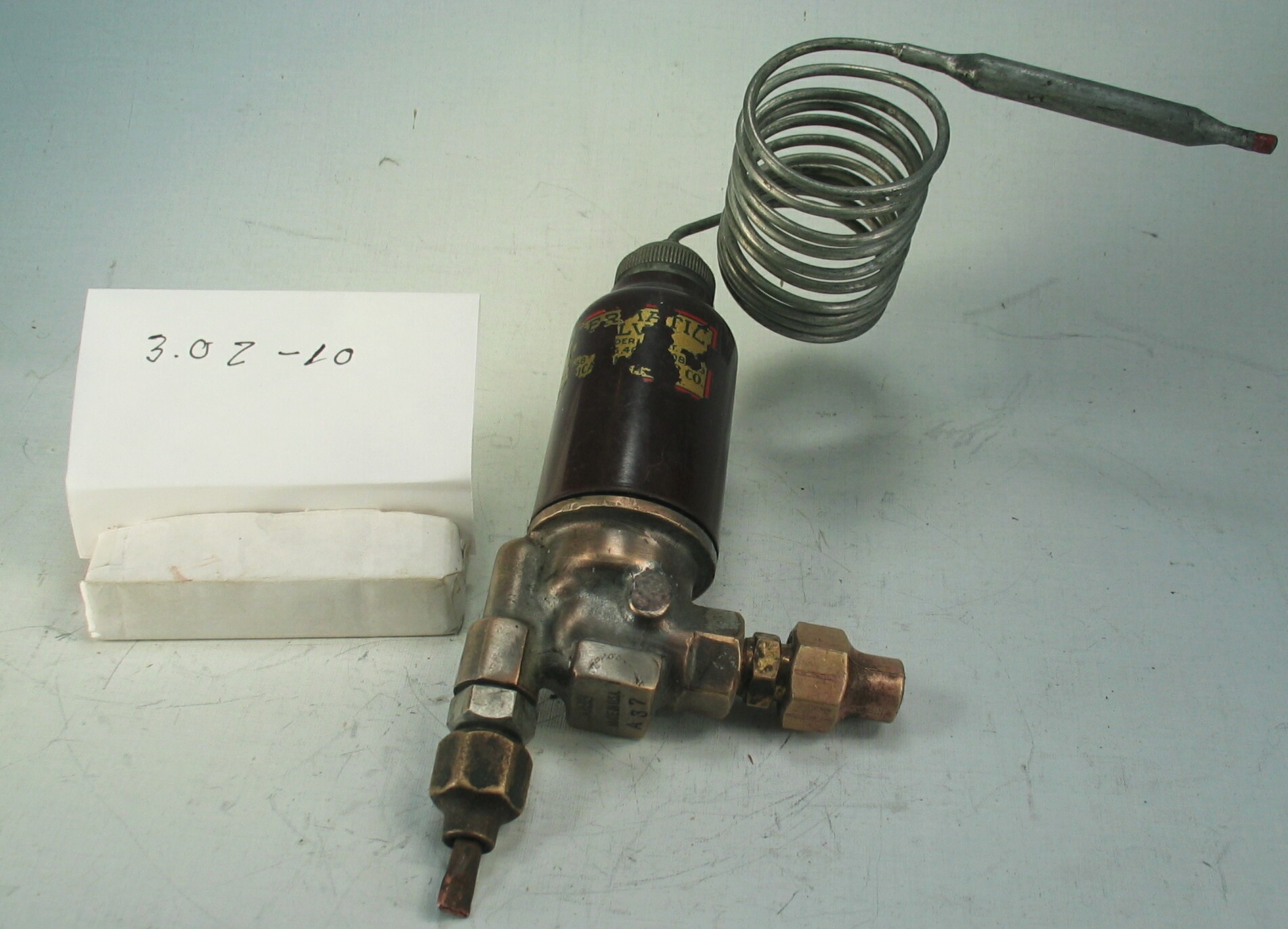3.02-8: American Radiator 1936 Thermostatic Expansion Valve
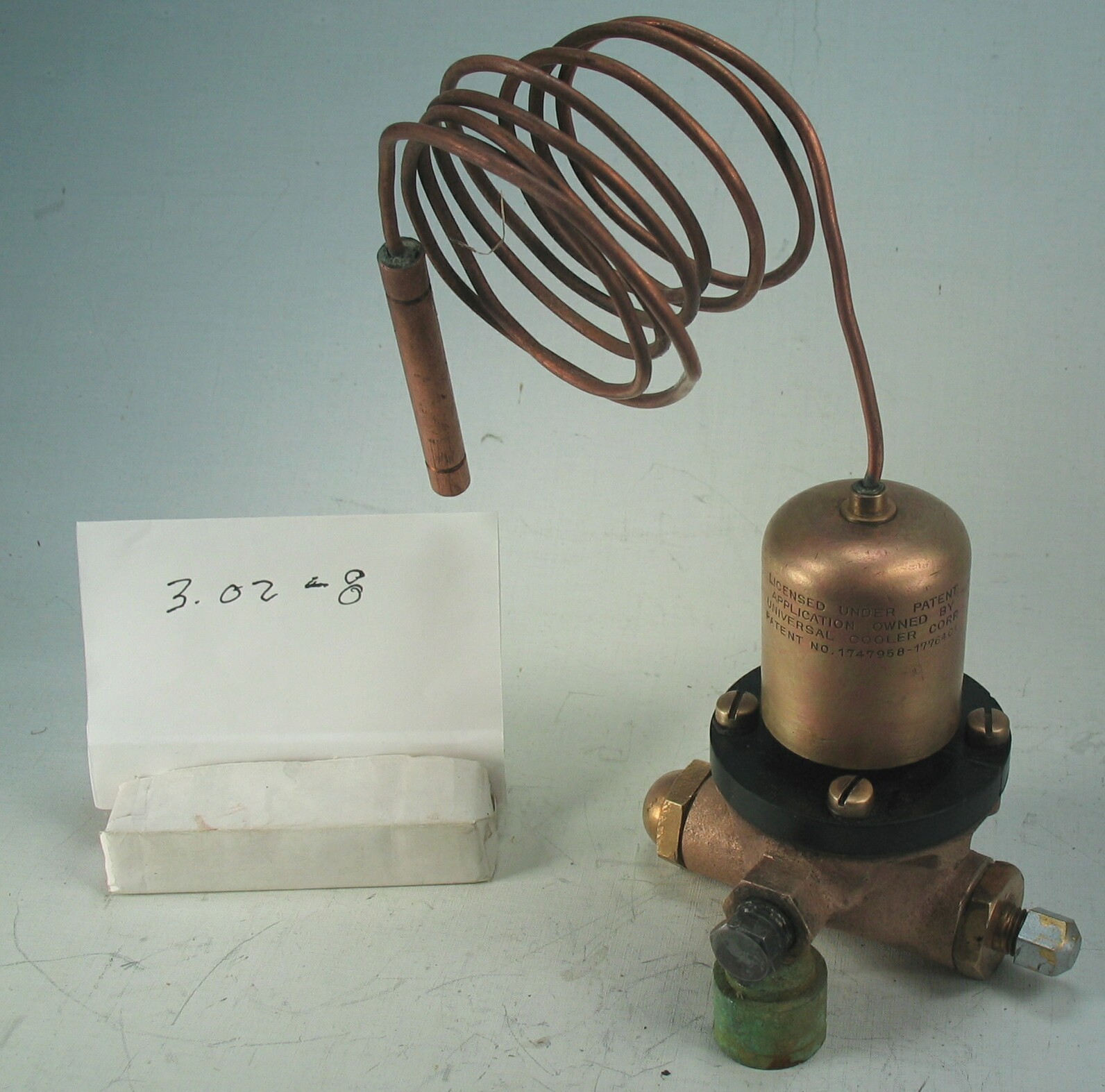
| HHCC Accession No. 2006.078 | HHCC Classification Code: 3.02-8 |
|---|
Description:
An early, compact, adjustable thermostatic expansion valve made by arguably the leader in expansion valve technology of the period, beautifully crafted with brass body, ‘high tech.’ Bakelite cover plate, similar to item ID #186 and #201, but differently fitted, this model licensed under patent to Universal Cooler Corp.; part of an impressive stable of valves, patterned off Detroit Lubricator’s earlier, Model 670, automatic expansion valve; Manufacturer’s name given here as American Radiator, Model 671- M, Series-1, circa 1936.
Group:
3.02 Refrigerant Flow Controls - Commercial
Make:
American Radiator
Manufacturer:
American Radiator Co., Detroit
Model:
671- M, Series -1
Serial No.:
Size:
5x 3 x 5 in. h
Weight:
2 lbs
Circa:
1936
Rating:
Exhibit, education, and research quality, illustrating the engineering design, construction, and operating principles, of a ‘high Tech’ thermostatic expansion valve of the mid 1930’s
Patent Date/Number:
1747958; 1776401; 1928 to 1930
Provenance:
From York County (York Region) Ontario, once a rich agricultural hinterlands, attracting early settlement in the last years of the 18th century. Located on the north slopes of the Oak Ridges Moraine, within 20 miles of Toronto, the County would also attract early ex-urban development, to be come a wealthy market place for the emerging household and consumer technologies of the early and mid 20th century.
This artifact was discovered in the 1950’s in the used stock of T. H. Oliver, Refrigeration and Electric Sales and Service, Aurora, Ontario, an early worker in the field of agricultural, industrial and consumer technology.
Type and Design:
Construction:
Heavy cast brass body
Material:
Special Features:
Accessories:
Capacities:
Performance Characteristics:
Operation:
Control and Regulation:
Targeted Market Segment:
Consumer Acceptance:
Merchandising:
Market Price:
Technological Significance:
This valve, compact and elegant in design and construction, in contrast to similar valves produced by Frigidaire of the period [See ID # 184 and 185], was the work of a relative new comer in the refrigeration field, Detroit Lubricator. It would prove to be a significant marker of the changing times. The age of the component parts, systems, specialty manufacturer had arrived, here as in the automotive field. In the future brand name system and equipment suppliers to the HVACR market would concentrate on system development, production and marketing. Increasingly, component technologies would be out sourced to specialty companies with the engineering know how and needed production capacities. The valve would stand as a wonderful icon of the early years in TX valve development, as the industry searched for an alternative to the costly and often troublesome, liquid refrigerant, float valve technology of the mid 1920, and 30’s. This artifact of history tells the many stories of early adoption of this particular refrigerant flow control technology. After a brief flurry of excitement over the use of costly and delicate float operated devices, as a more efficient means of flow control, industry engineers would return to the automatic expansion valve in the early 30’s. But for many medium and larger applications the automatic expansion valve would give way to the more elegant and efficient thermostatic valve for use in a new generation of ‘dry evaporator’ applications.
Industrial Significance:
Carrying the name American Radiator, the exact genealogy of this device remains to be determined, including its relationship to Detroit Lubricator, The range of configurations in which this valve was produced was a marker of an increasingly diverse market place for thermostatic expansion valve technology, with different fitments to meet the different requirements of original equipment manufacturers. It was an industry in its first period of rapid growth. See also ID # 186, 201, 202 The valve is also an industry marker of the early entry of Universal Cooler, destined to be a major new player in the growing commercial refrigeration field.
Socio-economic Significance:
The socio-cultural significance of the impact of the unobtrusive, thermostatic expansion valve on life in Canada, throughout the latter part of the 20th century, would be hard to over-estimate. It would become the quintessential, automated refrigerant flow regulating device for most medium and larger commercial refrigeration applications, found in confectioneries, food stores and ware houses. It would help to make possible the wide array of foods and confectionery products Canadians would come to enjoy, as part of the late 20th century Canadian life experience.
Socio-cultural Significance:
Donor:
G. Leslie Oliver, The T. H. Oliver HVACR Collection
